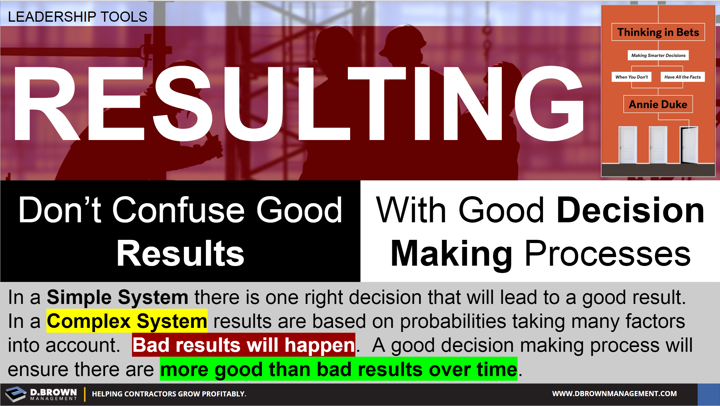As a leader in the construction industry the majority of your value-add is:
- Making good decisions
- Ensuring those decisions are executed
- Teaching others how to do the same
In a simple system the decision tree may have a few known variables and a single clear path which is easily trainable.
Most project decisions are more complex having more variables and outside influences impacting results over a longer time span. Given time pressures and limits of the human brain only a few of those variables can be accounted for accurately in our mental model of a situation.
The results of a good decision making process are not 100% good but the average results over time are good. Resulting is a term used in poker when a player starts changing a good decision making process based on the resulting outcomes. This seems logical but will lead to an overall decline in results with increased variability.
Contact us to learn how we train teams to make better decisions

